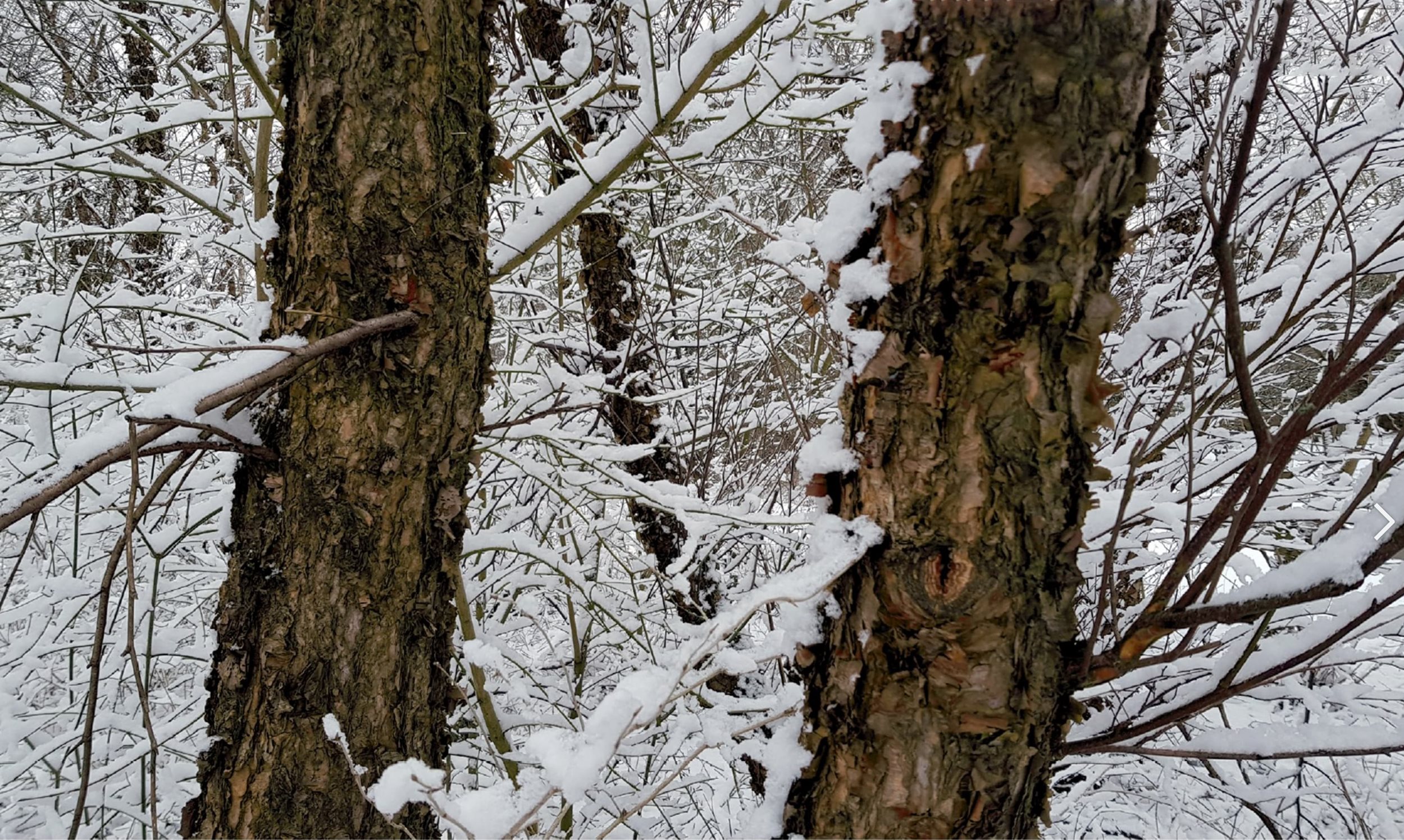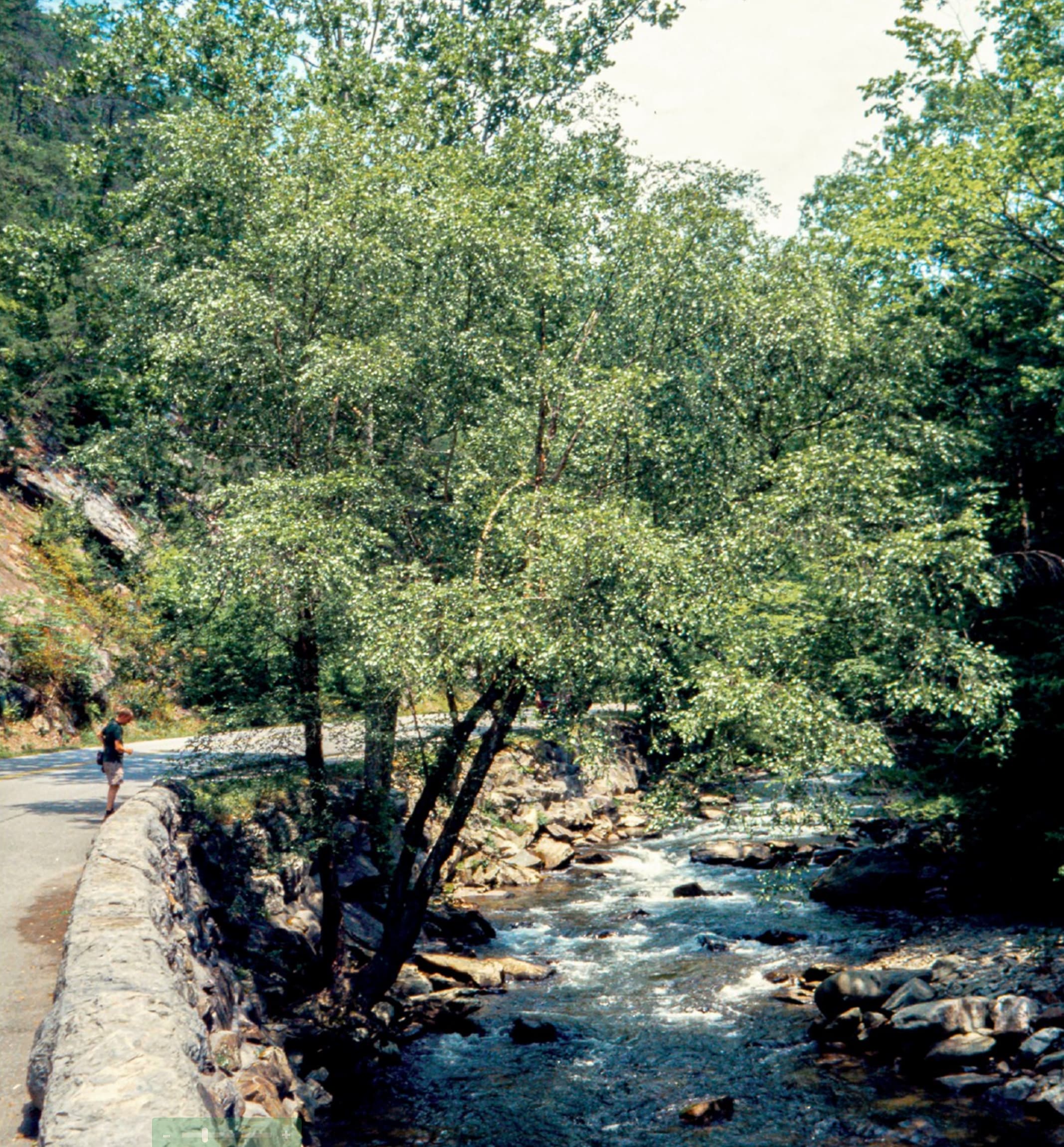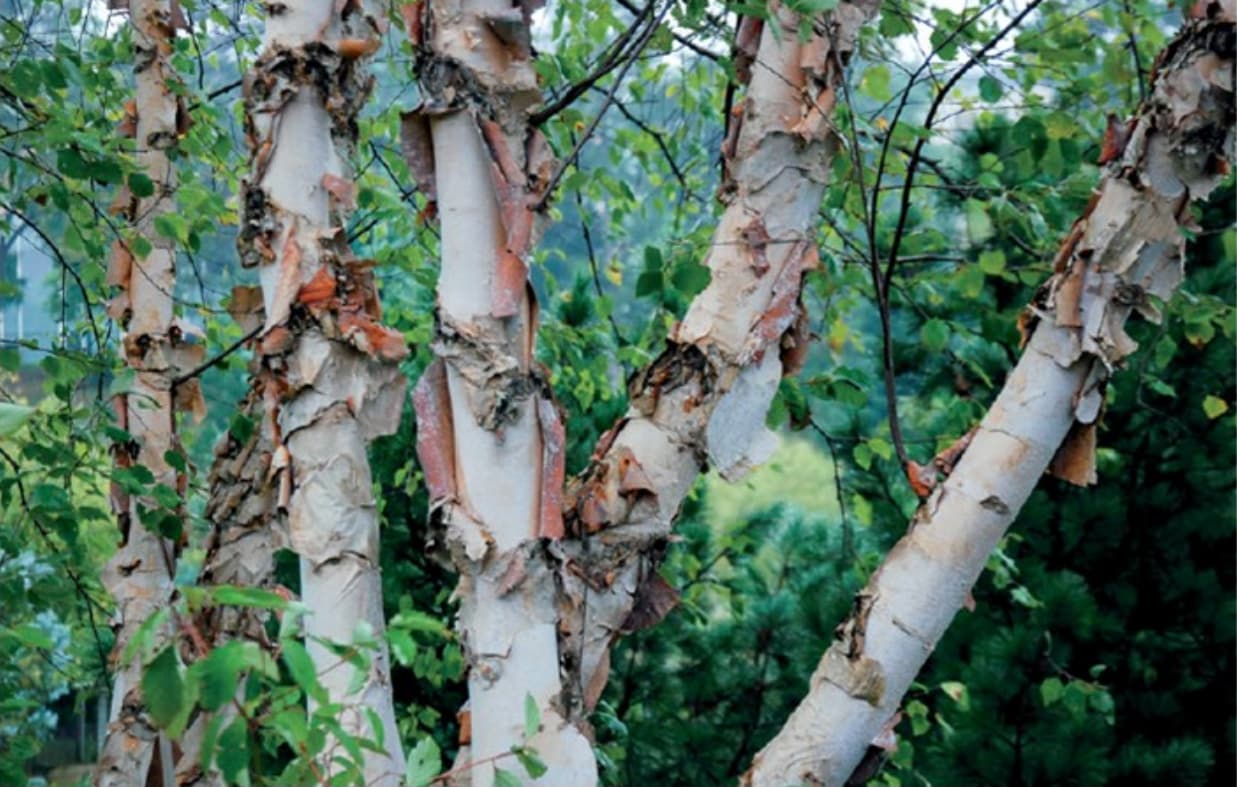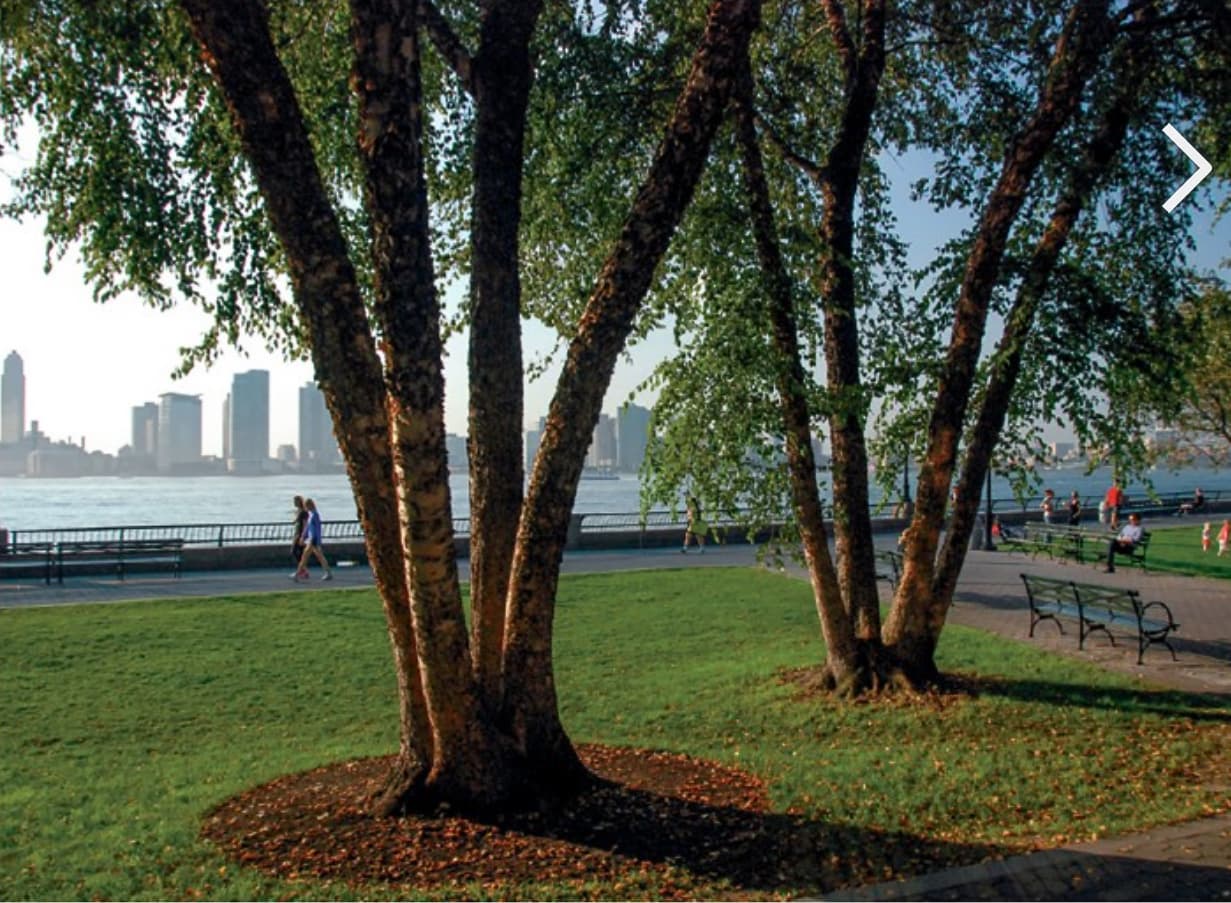An exciting tree with good aesthetic and technical qualities
Dr Henrik Sjöman and Dr Andrew Hirons

In natural populations the the bark of Betula nigra is often cinnamon-brown to black and very flaky.

Black birch in its natural setting: it is often found near streams.

The cultivar ‘Heritage’ develops flaky stems but its bark is white to pink, not black and curly like the species.

Appreciating plants, and especially trees, can take different forms. Sometimes it seems best to admire them from a distance, sometimes it is the small details that require our focus and sometimes we feel like hugging the trunk.
In this Plantsman’s Choice, we want to bring to your attention a birch species that, with its flaky bark and graceful foliage, makes a promising ornamental tree. In addition to its aesthetic value, the species is also a useful tree for sustainable storm water management because it can tolerate periods of flooding.
Betula nigra is a birch with many common names in its US homeland, including river birch, red birch, water birch and black birch. All these names provide good guidance on the species’ appearance and its natural habitat.
Black birch and red birch refer to the colour of the bark – the species has one of the darkest bark colours in the genus. In natural populations the bark is often cinnamon brown to black and very flaky without no properly smooth areas. Selected varieties, however, often have stems with larger areas of lighter and smoother bark. These tend to be considered more beautiful; in many ways they are less dramatic, though.
As the names river birch and water birch reveal, the species’ natural habitat is usually adjacent to rivers or in lowland areas that are frequently flooded. The natural distribution of the black birch extends from northern Florida in the south (making this species one of the southernmost birches) to New England in the north. Throughout this distribution, it is also found in forest systems that are not so moist. On well-drained soils, however, the river birch is not a long-lived tree; after a while it is usually outcompeted by other large growing and more shade-tolerant species. On wet soils or in places that are regularly flooded, it gains a more long-term dominance. This natural tolerance to fluctuating conditions makes it a good candidate for a wide range of sites including those associated with storm water management.
The black birch is, like birches native to the UK, a pioneer species that quickly moves in after some kind of disturbance. It is considered to be easy to establish but should still be watered carefully in the first years after planting.
In their native stands black birches often develop into narrow, single-stemmed trees up to 30m in height, whilst in UK they usually grow 10–15m high, but can reach 20m. In open solitary positions, the species tends to develop a multi-stemmed growth and develops a much wider crown shape. At first, the growth pattern is upright, but soon the side branches become more outward-growing, which gives the tree an appealing and slightly mischievous expression. The leaves are thin, have a beautiful knight’s-shield shape and are lush light-green in summer. The autumn colour is usually a vibrant yellow.
Betula nigra ‘Heritage’
This cultivar is a very popular ornamental tree in the US. It develops a pyramidal, light permeable crown with fresh green leaves that become intensely yellow in autumn – a much more intensely yellow autumn colour than the species. It usually grows to 10–15m high but can reach 20m. The flaky stem is not as black and curly as the species’ but is more white to pink and has both smooth and flaky areas. The cultivar has a good tolerance for wind-exposed sites but is sensitive to compact soils with prolonged waterlogging where it develops poorly and seems to lose cold hardiness. This variety is also known as ‘Cully’.
Betula nigra ‘Little King’
A compact form of black birch which in its youth is quite similar to ‘Heritage’, but which over time gets a denser crown and, with increasing age, develops a compact form with a final height of 6–7m. It is a very beautiful tree for smaller private gardens or mixed plantations with shrubs and flowering perennials.
Dr Henrik Sjöman is a Lecturer at the Swedish University of Agriculture Sciences and a Scientific Curator at Gothenburg Botanic Garden.
Dr Andrew Hirons is a Senior Lecturer in Arboriculture and Urban Forestry at University Centre Myerscough.
This article was taken from Issue 192 Spring 2021 of the ARB Magazine, which is available to view free to members by simply logging in to the website and viewing your profile area.